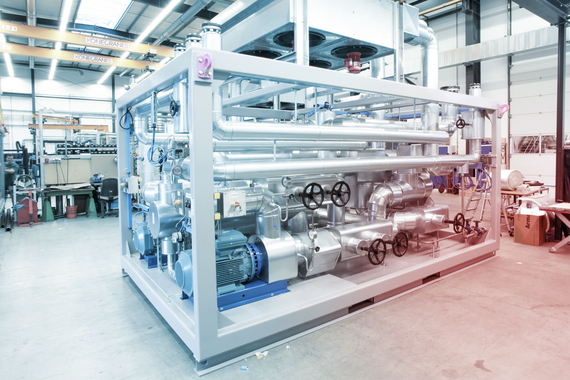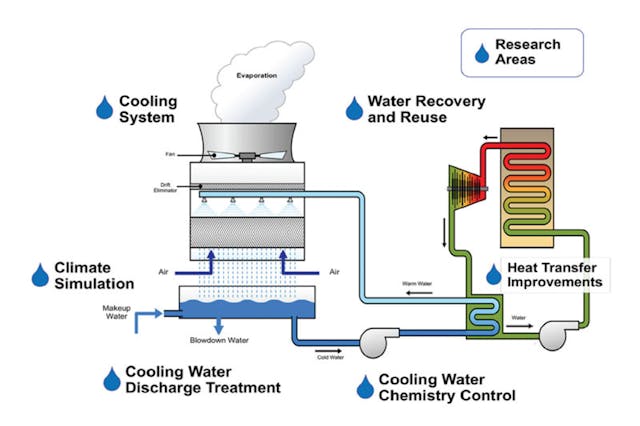5 Smart Strategies DVS Heat Transfer Systems Improve Energy Management in Electronics
Exploring the Conveniences and Applications of Heat Transfer Solutions in Modern Industry
Heat transfer systems play an essential role in modern industry. They encompass various devices such as transmission, convection, and radiation, each contributing to effective thermal monitoring. Industries like production and aerospace benefit greatly from these systems. As improvements continue, the integration of ingenious materials and technologies guarantees to improve energy efficiency. This evolution elevates crucial questions concerning the future effects for sustainability and operational costs across several industries. What lies in advance in this continuous makeover?
Recognizing Heat Transfer Principles
Heat transfer principles are basic to the procedure of various industrial systems. These principles incorporate the systems of transmission, radiation, and convection, each playing an essential function in managing thermal energy. Understanding conduction involves examining exactly how Heat moves through strong materials, while convection pertains to Heat transfer in fluids, driven by liquid activity. Radiation, distinctive from the various other two, entails energy transfer through electromagnetic waves. The efficiency of Heat transfer impacts system performance, power consumption, and general performance. Reliable thermal management is necessary in processes such as home heating, air conditioning, and Heat recovery. By grasping these concepts, industries can enhance their procedures, reduce power costs, and improve tools durability, consequently adding to an extra lasting and effective commercial landscape.
Trick Kinds Of Heat Transfer Equipments
While numerous sectors make use of Heat transfer systems for diverse applications, several essential types stick out as a result of their particular features and effectiveness. The most common kinds consist of conduction, radiation, and convection systems. Transmission systems transfer Heat via straight call in between products, making them efficient in solid-state applications. Convection systems, on the other hand, utilize fluid movement to transfer Heat, ideal for home heating or cooling down liquids and gases. Radiation systems run without a tool, depending on electro-magnetic waves to move Heat, ideal for high-temperature settings. Each kind serves distinctive objectives, allowing industries to tailor their Heat transfer options based on operational demands, power performance, and cost-effectiveness. Recognizing these systems is crucial for maximizing performance in different industrial settings.
Industrial Applications of Heat Transfer Technologies
The application of Heat transfer innovations in industry plays an important duty in boosting energy performance and enhancing processes. DVS Heat Transfer Systems. By carrying out advanced Heat exchange systems, companies can greatly lower their environmental influence while enhancing total productivity. This integration not just promotes sustainability yet likewise aligns with contemporary governing and consumer needs for greener methods
Energy Efficiency Improvements
As industries significantly focus on sustainability, energy effectiveness improvements in Heat transfer innovations have become essential for minimizing operational expenses and ecological impact. Improved Heat exchangers, for example, utilize sophisticated materials and layouts to make best use of thermal efficiency while lessening energy usage. Moreover, integrating variable rate drives in pumping systems enables much better control of liquid circulation, leading to substantial energy cost savings. The execution of clever sensing units and automation gives real-time tracking, allowing changes that enhance energy use. Furthermore, waste Heat recuperation systems capture excess thermal energy, converting it into functional power. These innovations not just improve energy efficiency but also add to an extra lasting commercial landscape by reducing greenhouse gas emissions and supporting compliance with environmental regulations.
Process Optimization Techniques
Refine optimization techniques are crucial in enhancing the performance and effectiveness of Heat transfer modern technologies in industrial applications. These strategies include refining procedures to take full advantage of Heat transfer performance while minimizing power intake and functional costs. Techniques such as computational liquid characteristics (CFD) modeling enable designers to analyze and simulate Heat transfer situations, identifying areas for improvement. Furthermore, real-time surveillance systems can offer valuable data on temperature slopes and circulation prices, enabling adjustments that optimize efficiency. In addition, implementing advanced control strategies, such as anticipating analytics, can enhance system responsiveness to varying functional needs. By applying these optimization strategies, sectors can achieve better thermal efficiency, lowered downtime, and boosted product top quality, ultimately bring about enhanced competitiveness in the marketplace.

Ecological Impact Decrease
While commercial Heat transfer technologies are crucial for functional performance, their application also provides opportunities for substantial environmental influence reduction. By improving energy performance, these systems reduce fuel usage, leading to lower greenhouse gas emissions. Progressed Heat exchangers can recoup waste Heat, rerouting it to preheat inbound fluids, thus decreasing energy demands. On top of that, the combination of Heat transfer technologies in renewable power systems, such as solar thermal and geothermal applications, sustains the shift to lasting techniques. Industries that use these technologies additionally gain from reduced operational prices and boosted regulatory compliance. On visit this site the whole, the critical implementation of Heat transfer systems not just boosts productivity yet also cultivates an extra lasting commercial landscape, adding to international environmental objectives.
Benefits of Reliable Heat Transfer Equipments
Reliable Heat transfer systems provide considerable benefits in modern-day sector, largely with improved power efficiency and expense reduction. By enhancing thermal monitoring, these systems minimize power waste, causing reduced functional prices (DVS Heat Transfer Systems). Companies can accomplish higher sustainability and improved earnings.

Energy Effectiveness Improvements
As industries progressively focus on sustainability and cost-effectiveness, energy efficiency enhancements in Heat transfer systems have actually become a crucial focus. Boosted efficiency in these systems results in decreased power usage, allowing centers to run even more sustainably. By maximizing Heat transfer techniques, sectors can decrease waste Heat and achieve better thermal administration, substantially lowering their ecological effect. Breakthroughs in modern technologies such as Heat exchangers and insulation materials add to improved performance and integrity. Applying energy-efficient Heat transfer services not only supports conformity with governing requirements however also promotes a culture of technology within companies. Inevitably, these improvements are essential in lining up commercial operations with worldwide power conservation goals, leading the way for an extra lasting future in production and processing sectors.
Price Decrease Opportunities
By enhancing Heat transfer systems, sectors can expose considerable expense decrease possibilities that enhance their profits. Effective Heat transfer reduces power intake, bring about lower energy expenses and reducing functional expenses. Additionally, enhanced system performance reduces the requirement for maintenance and fixings, furthermore conserving expenses over time. Enhanced Heat transfer can additionally expand equipment lifespan, permitting business to postpone capital investment on substitutes. Waste Heat healing systems can transform excess Heat into useful energy, better driving down prices. These systems not only simplify procedures but likewise contribute to sustainability initiatives, placing firms positively in a significantly eco-conscious market. Generally, the monetary advantages of efficient Heat transfer systems are substantial and essential for competitive advantage.
Technologies in Heat Transfer Solutions
Exactly how can modern industry enhance its procedures through ingenious Heat transfer solutions? By taking on advanced materials and technologies, industries can significantly improve thermal efficiency and efficiency. Innovations such as nanofluids, which boost Heat transfer capacities this post past conventional fluids, and stage change products that store and launch thermal power, are acquiring traction. Furthermore, the combination of smart sensing units and IoT devices enables real-time surveillance and optimization of Heat transfer processes, reducing waste and enhancing system responsiveness. Additive manufacturing strategies enable the development of even more complex Heat exchangers that make best use of surface area while decreasing product use. Collectively, these developments drive functional efficiency and develop affordable advantages in different sectors, including aerospace, manufacturing, and energy.
The Role of Heat Transfer in Sustainability Initiatives
While the push for sustainability remains to improve markets, the role of Heat transfer modern technologies ends up being significantly essential in accomplishing environmental goals. Reliable Heat transfer systems help with power efficiency by optimizing thermal monitoring in various procedures, considerably minimizing power usage and greenhouse gas discharges. Progressed Heat exchangers are used in commercial applications to reclaim waste Heat, consequently lessening energy waste. Furthermore, advancements such as stage change products boost thermal storage space, adding to renewable resource combination. The fostering of sustainable fluids in Heat transfer systems can decrease ecological effect. By prioritizing efficient Heat transfer, sectors not only enhance operational efficiency yet additionally align with global sustainability campaigns, fostering a cleaner, much more sustainable future.
Regularly Asked Inquiries
Just How Do Heat Transfer Equipments Influence Power Prices in Production?
Heat Related Site transfer systems markedly affect power prices in production by boosting performance, lowering waste, and maximizing thermal monitoring. These improvements cause reduce operational expenses, ultimately benefiting overall productivity and success in industrial operations.
What Upkeep Is Required for Heat Transfer Solutions?
Upkeep for Heat transfer systems includes normal assessments, cleansing of parts, examining liquid levels and conditions, replacing used components, and making sure appropriate insulation. These actions boost performance, prolong lifespan, and protect against pricey failures in operation.
Are There Safety And Security Interest In Heat Transfer Systems?
Safety problems with Heat transfer systems include possible leakages, pressure accumulation, and thermal risks. Proper style, regular maintenance, and adherence to safety and security methods are vital to reduce these threats and ensure secure operation in industrial settings.
Exactly How Can I Select the Right Heat Transfer System for My Service?
Picking the best Heat transfer system entails assessing elements such as performance, application requirements, budget plan restraints, and safety standards. A detailed analysis of these elements will assist assure perfect performance and dependability in organization operations.
What Are Common Failings in Heat Transfer Equipments and Their Causes?

Understanding transmission entails examining just how Heat relocates via strong materials, while convection pertains to Heat transfer in liquids, driven by liquid motion. By enhancing Heat transfer approaches, industries can decrease waste Heat and attain much better thermal management, substantially lowering their ecological influence. Waste Heat recovery systems can change excess Heat right into usable power, further driving down expenses. Advanced Heat exchangers are made use of in industrial applications to redeem waste Heat, consequently minimizing energy waste. Typical failings in Heat transfer systems consist of leakages, rust, and ineffective Heat exchange.